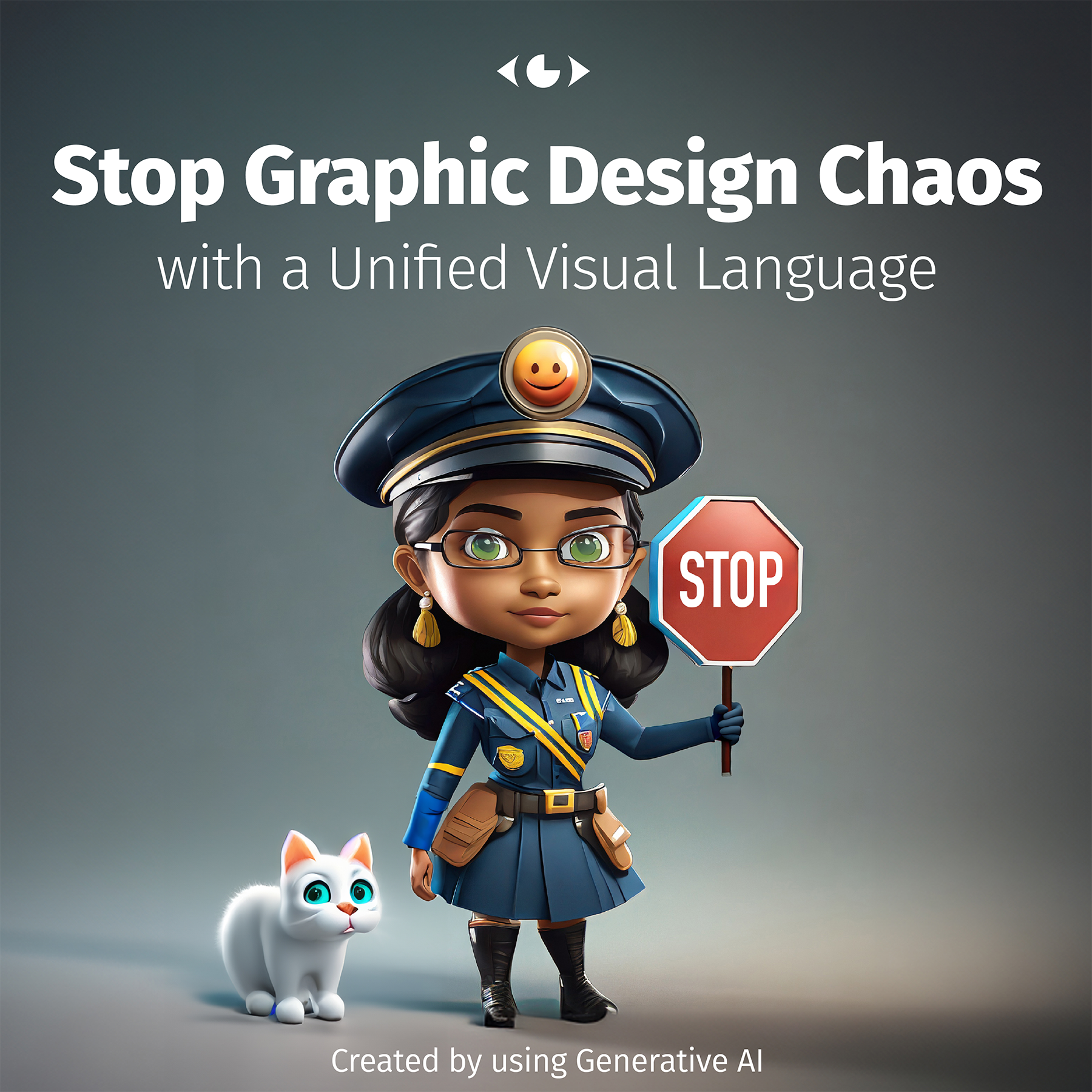Stop Graphic Chaos

Stop Graphic Design Chaos with a Unified Visual Language
Aligning your brand across various platforms and with multiple designers requires a strategic and consistent approach. Effective design goes beyond selecting colours, typefaces, and imagery. It involves ensuring consistency, harmony, and purpose. How can you avoid inconsistent marketing messages?
1. Establish Clear Brand Guidelines: Create comprehensive guidelines outlining details of how your brand should be represented to the world. These guidelines are essentially an instruction manual and rule book on how to communicate your brand. This is where the infamous “logo police” comes into play.
2. Communicate Your Brand Vision: Ensure that all people involved, whether in-house or external, understand your brand’s vision and values. Promote transparent communication to tackle queries or apprehensions, preventing deviation from the central concepts.
3. Create a Design System: Develop a system with reusable design elements and components. This system should cover all brand touchpoints. Maintaining consistency ensures that designers utilize standardized building blocks in asset creation rather than starting from scratch for each new task.
4. Use a Centralized Asset Repository: Maintain a centralized repository for all brand assets, including logos, images, fonts, and design templates. This ensures that everyone working with your brand has access to the most up-to-date brand materials and operates from a single reference source, which will alleviate a great deal of frustration.
5. Collaborate and Provide Feedback: Offer constructive feedback. Art direction is pivotal in this regard.
6. Implement a Review Process: No material should be published without approval.
7. Use Technology to Aid Consistency: Leverage design tools and software with collaboration and version control features. These tools help maintain consistency by tracking changes and allowing multiple designers to work on the same project without risking design inconsistencies.
8. Conduct Brand Audits: Conduct brand audits to assess how well your brand is represented across various platforms.
9. Train Designers: Continuous education and skill-building can lead to better design and brand alignment.
10. Seek Feedback from End Users: Pay attention to feedback from your target audience. Their perceptions and experiences with your brand will help you fine-tune your design and messaging to ensure it resonates effectively.
11. Lead by Example: Showcase successful examples of on-brand designs and campaigns. This can serve as motivation and inspiration for the entire team.
12. Adapt to Platform-Specific Requirements: While maintaining brand consistency, understand that different platforms may have unique design requirements. Adapt your brand’s design elements to fit the context while ensuring core branding elements remain consistent.
Consistency is key in branding, and it requires ongoing effort and commitment. It’s not a simple process; it demands resilience and a firm determination. Guiding creative individuals can sometimes feel as challenging as herding cats.